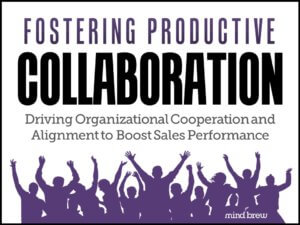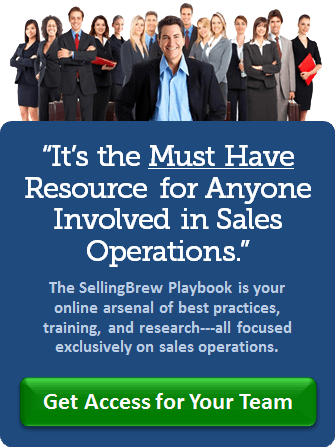Music teachers who are introducing young people to the symphony orchestra for the first time often play The Young Person’s Guide to the Orchestra by Benjamin Britten for their classes. (And some of the really fun music teachers also play The Young Lutheran’s Guide to the Orchestra, which is in the same vein but much sillier.) The piece highlights the different families in the orchestra — woodwinds, brass, strings, percussion — before giving each instrument a moment to shine. It then brings it all back together to show how the orchestra functions as an integrated whole with each musician and the conductor playing their respective roles.
A well-functioning company should operate similarly. Each team has a unique role that they must play skillfully for the business to remain healthy. Each team also needs to listen to the others and collaborate in order to create beautiful music.
Sales operations is a particularly good example of this concept because of its highly collaborative nature. Sales operations really can’t function solo — it requires cross-functional teamwork in order to accomplish its goals. But when sales ops gets the collaboration right, it’s a thing of beauty.
How does it create that beauty? Like the members of an orchestra, the sales ops team members need at least four things in order to be successful:
- Clear roles and objectives. In the orchestra, the piccolo player can’t suddenly decide to play the bass line. The French horn player can’t switch to the clarinet’s part. The snare drum can’t play the violin solo. Different instruments might play the same notes for a period of time, but only when the music calls for it. The same is true in B2B firms. Some sales operations responsibilities might overlap for a time with sales, marketing, pricing, finance, or another team. That only works if each team understands what it is contributing to the whole and where its efforts need to diverge from the others. By defining clear roles and responsibilities, teams can work together more effectively and avoid duplicated efforts or gaps in the sales process.
- Communication and alignment. Good musicians know how to play their instruments well. Great musicians also know how to listen well. Just as an orchestra relies on clear communication and coordination, sales operations teams must also foster open communication channels between departments, listening as often as they are talking. Regular meetings, updates, and sharing of key information can help ensure that all teams are aligned and working together toward shared goals.
- Mutual trust and support. You can see a demonstration of the trust orchestra members have in one another at the very beginning of a concert. Before they play their first piece, the principal violinist (known as the concertmaster) plays an A that everyone else tunes to. The musicians trust that the concertmaster has tuned properly, and they trust that each orchestra member is capable of tuning their instrument to be in key with the rest. A similar level of trust is necessary when sales ops is working with other teams. By fostering a culture of respect, teams can feel confident in sharing ideas, providing constructive feedback, and collaborating to solve challenges.
- Continuous improvement and adaptation. No matter how many times an orchestra has played a piece, it never sounds exactly the same. The conductor and musicians are constantly refining their performance, always hoping to play better than the last time. And along the way, they must adapt to changes in the audience, the venue, the temperature, the humidity, their physical health and fitness, and dozens of other small things that can affect the sound they produce. Sales operations requires a similar mindset. You can’t be content to accept the status quo. But by regularly evaluating processes, sharing best practices, and addressing inefficiencies, cross-functional teams can work together to optimize sales operations and drive success even as the environment around you keeps changing.
When the performance is over, the audience usually applauds, sometimes even calling for an encore. But most orchestra musicians will tell you that they don’t play for the applause. Audiences are fickle and can sometimes be fooled, but musicians know when their performance has gone well or not. At the end of a particularly good concert, you might see them smile at one another, perhaps even congratulating one another. They find that experience of a job well done to be highly motivating, and the joy they get from collaborating with other skillful musicians keeps them playing season after season.
If you’d like to see your sales ops team functioning more like a world-class symphony when it interacts with other departments, check out the webinar on Fostering Productive Collaboration. It lays out eight key ingredients in the most effective approaches to cross-functional collaboration and alignment.











